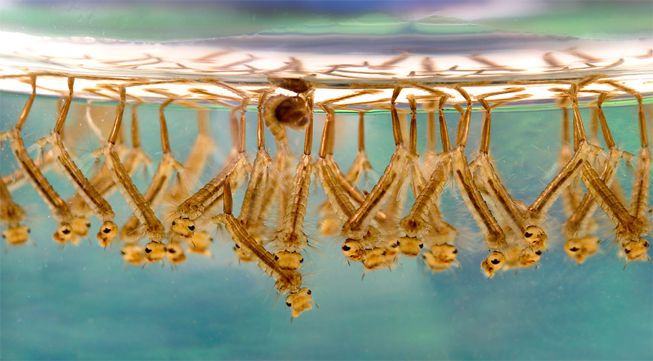Microplastics and Mosquitos: What do they have in common?
Published by Ocean Conservancy
If you thought ocean plastic pollution only affects the ocean once it enters the water…you thought wrong.
A studied recently published in the scientific journal Biology Letters announced an alarming new finding: while microplastics themselves might not be ‘living,’ they’re now making their way out of the aquatic environments they’re polluting and traveling to other food chains. Translation:
Microplastics are now infiltrating all new food chains, including land-dwelling species,
via mosquitoes.
The process by which these insanely tiny pieces of plastic are traveling actually isn’t all that surprising, if you think about it. What’s happening, according to researchers, begins when the mosquitoes are in their pupal stage (think baby mosquitos). It’s during this stage that the larvae are consuming microplastics while they’re still water-dwelling, but those little particles are still hanging around as the transition into adulthood occurs.
What’s happening next isn’t far off from what happens in many marine species. It all starts with one organism eating one piece of plastic. As microplastics stick around in a mosquito’s body into adulthood, they’re consumed with the mosquito when the insect is eaten by a predator, such as a bird. Just like the microplastics are remaining in the mosquito, they remain in the bird that ate it, too. That bird, with its ability to migrate to other habitats, now gives this process of microplastic dissemination the ability to travel up the trophic system until microplastics contaminate more and more food chains. This process is known as ontogenic transference, and when it comes to the scope of plastic pollution, its potential may be deadly.
But how did scientists arrive at this finding, you may ask? Pretty simple, actually, The researchers fed fluorescent microbeads to larvae in their lab, and watched what happened microscopically. When they saw that the plastic remained in the insects’ body even after they completed their larval stage, the weight of what they had discovered hit them.


One of the researchers who implemented the study, Amanda Callaghan, explained:
“This is eye-opening research, which has shown us for the first time that microplastics are able to navigate several life stages in flying insects, allowing them to contaminate all kinds of living creatures who wouldn’t normally be exposed to them. It’s a shocking reality that plastic is contaminating almost every corner of the environment and its ecosystems.”
Nick Mallos, Director of the Trash Free Seas® Program here at Ocean Conservancy, noted just how clearly studies like these are proving the impact and scope of the ocean plastics problem:
“Studies like this unfortunately continue to uncover the true scope and scale of our plastic pollution problem. The potential for a massive portion of animals throughout the world’s food chains to become exposed to ocean-originating microplastics (even us)…that’s alarming, heartbreaking, and more than ever a call to action.”
Take the Plastics Pledge today and help fight back against marine debris and plastic pollution!
Sign up for our emails!
The post Microplastics and Mosquitos: What do they have in common? appeared first on Ocean Conservancy.
Read the full article at: https://oceanconservancy.org/blog/2018/10/05/microplastics-mosquitos-common/


